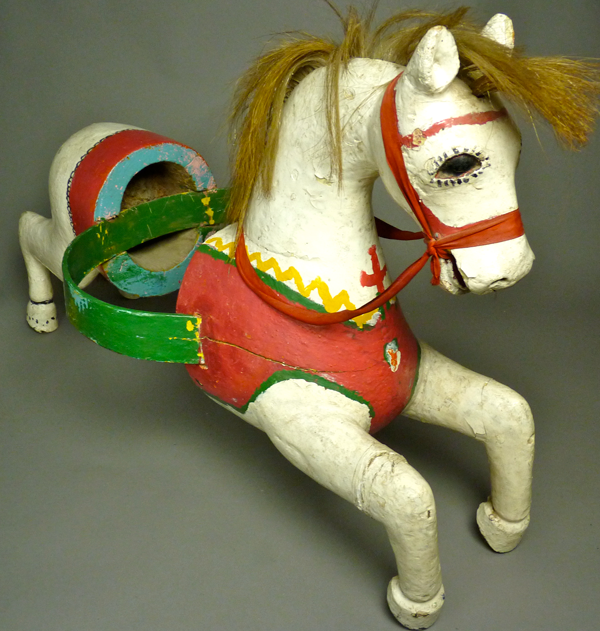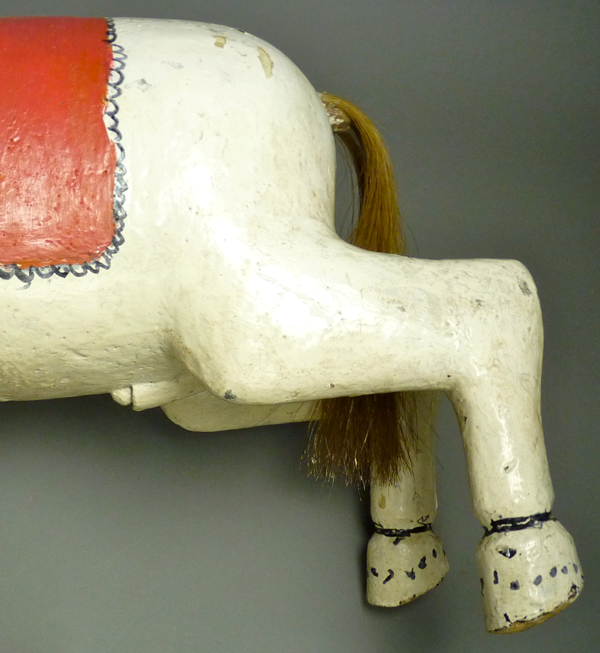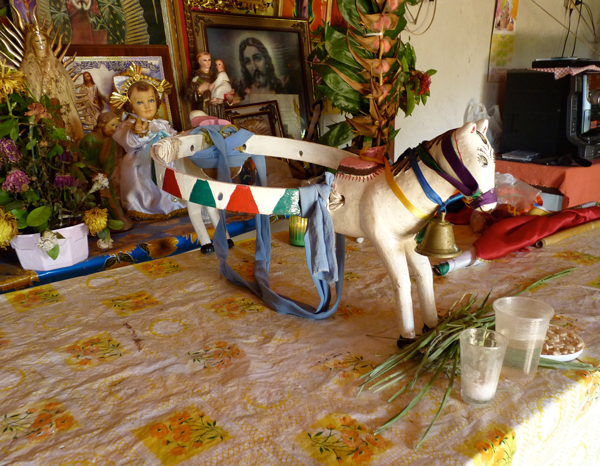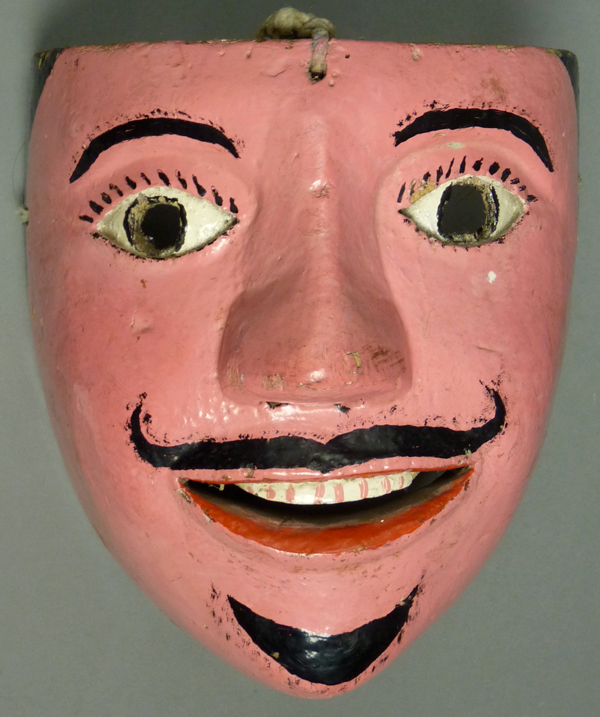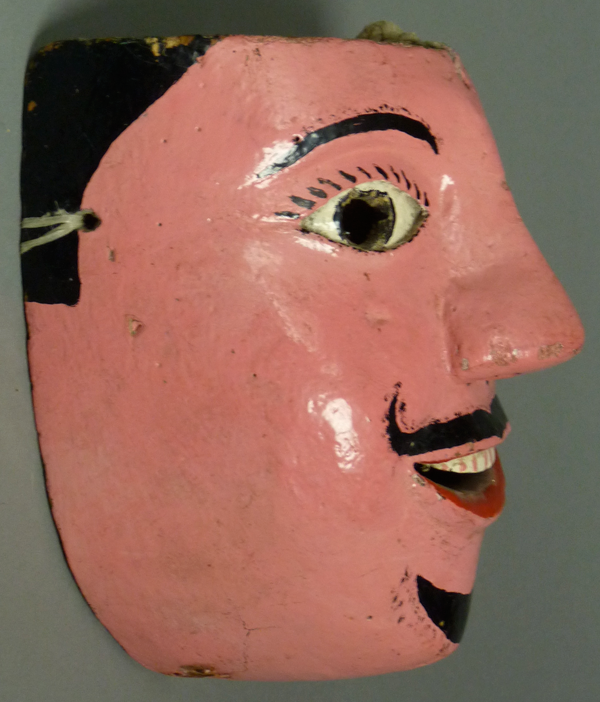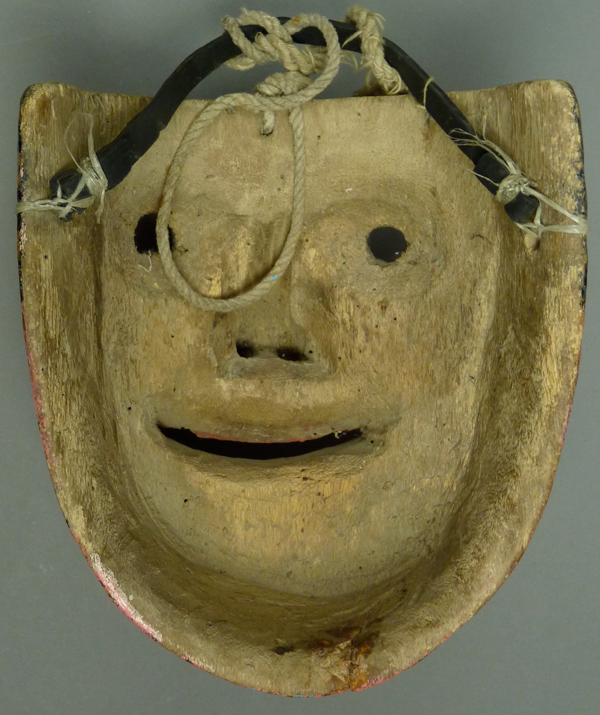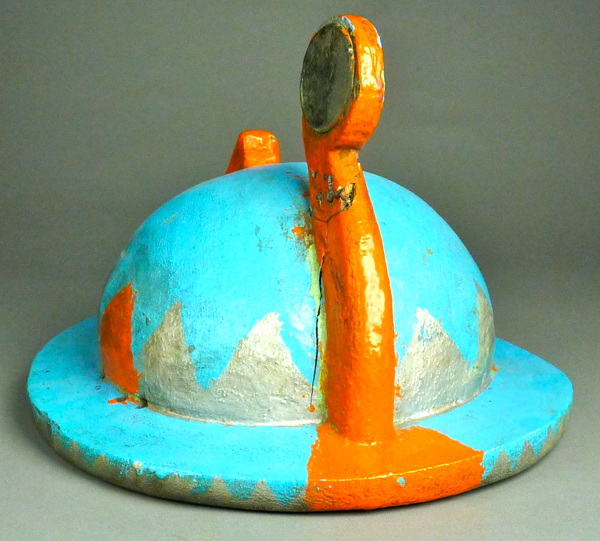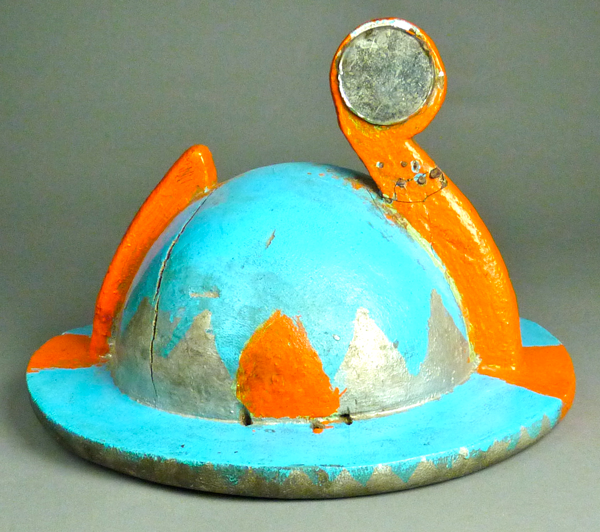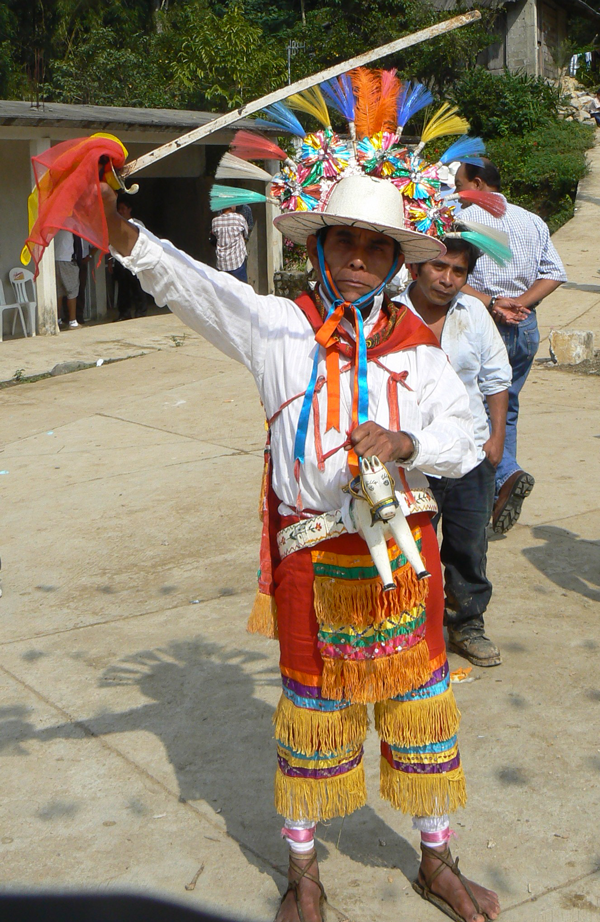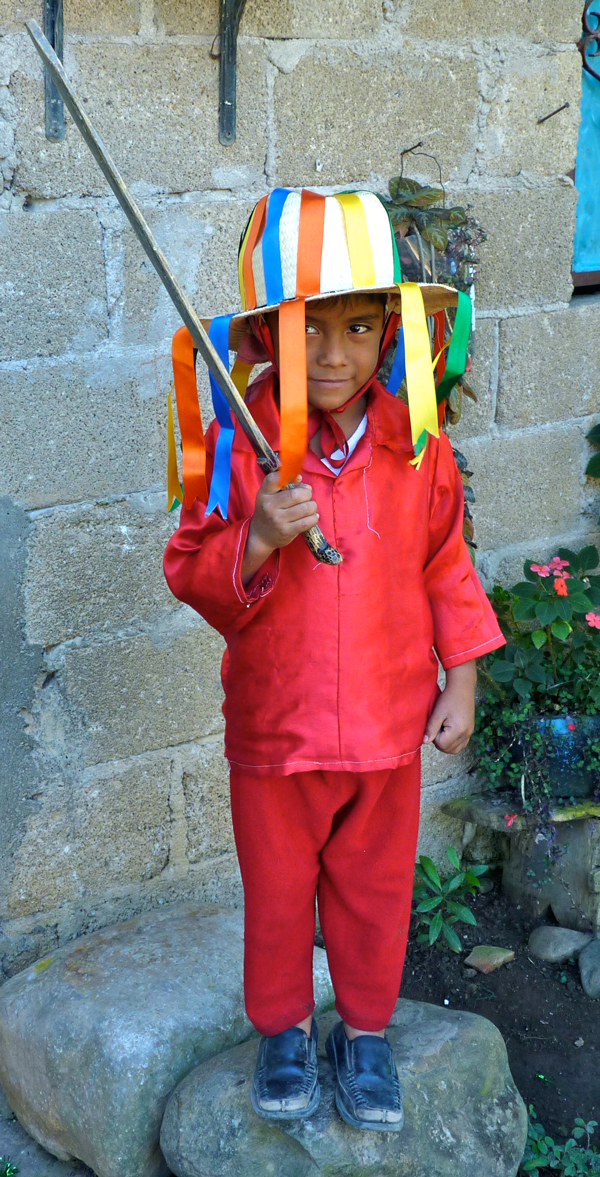In recent posts you saw masks for the Hormegas dance, a variant of the Danza de los Santiagueros. I thought that I might as well proceed to the Santiagueros dance itself.
The Dance of the Santiagueros and the dance of the Hormegas are examples of Mexican Indian dances that pretend to be about one thing when they are really about something else. Indians in Mexico have long used such dances to express political and social complaints in a disguised form, initially in order to avoid conflict with religious and civil authorities and more recently to complain and vent about situations of economic and social injustice in their communities. James C. Scott described such strategies in his book, Domination and the Arts of Resistance: Hidden Transcripts (Yale University Press, 1990). Later Max Harris applied Scott’s ideas to dances in the Americas in his book Carnival and Other Christian Festivals: Folk Theology and Folk Performance (University of Texas Press, 2003). I devoted an entire chapter to a discussion about such layers of meaning in my book about the Sierra de Puebla. I will begin this post with a mask and related props. Later I will explain how the ideas of Scott and Harris can be applied to the Dance of the Santiagueros.
The Dance of the Santiagueros has three groups of players. Santiago Caballero (Saint James on horseback), who is said to be the reincarnation of Saint James the Apostle, is usually depicted as riding a white stallion; he and his mount may stand alone or they may be accompanied by Santiago’s invented son, Callintsin, whose principal duty is to guard his father’s wooden horse from harm. There are two other groups of dancers, the Santiagueros and the Pilatos, and the relationships between these three entities prove to be mysterious and interesting.
Although Santiago occasionally wears a wooden mask, it is more usual for Santiago and Callintsin to dance without masks, but they do wear characteristic helmets, they carry wooden swords, and of course Santiago’s wooden horse is the most important emblem of his powerful position. Traditionally the Indians have treated Santiago’s horse as if it were a living saint, although this is not something that they describe in such explicit terms. Each year guardians are appointed to house the horse; they must offer the horse fresh food and water each morning. Here is one of those horses. It was found in the area of Papantla, Veracruz, in the mid-1980s, and was accompanied by a helmet and a mask to be worn by Santiago.
Ropes or straps suspended the hoop of the dance horse from the dancer’s shoulders. This horse is 34 inches long and the hoop is 15 inches in diameter.
Santiago’s horse is a stallion.
Here is a photo of a home altar in the town of Buenavista, Puebla. Santiago’s horse had been given refuge there and one can see the containers of food, water, and salt that have been provided for his nourishment. In the background we see images of Christ and the Saints.
Here is a rare example of a mask worn by Saint James. Usually he doesn’t wear a mask.
This mask is 7 inches tall, 6½ inches wide, and 5½ inches in depth.
The back of the Santiago mask does demonstrate some staining around the rim from use.
Here is one version of Santiago’s helmet, the one that came with this mask and horse.
This brim of this helmet measures about 12 inches in diameter and it is 8 inches tall.
This wooden helmet carries a mirror. From this view one can see cracks and old repairs in the wood.
Here is A Santiago figure dancing in the village of Cuauhtapanaloyan, Puebla, in December 2008. He has a characteristic hat, dance horse, and sword.
Here is the young child who was portraying Callintsin in the Dance of the Santiagueros in 2010, in Buenavista, Puebla. He holds his wooden sword.
The rest of this post will be devoted to fuller explanation and speculation about the hidden meaning of the Dance of the Santiagueros.
The name Santiagueros would seem to refer to individuals who serve Santiago. From this perspective, this dance would appear to be about conflict that pits Santiago and his warriors against Pilato El Presidente (named for Pontius Pilate) and his followers, the Pilatos. In the Hormegas dance, the corresponding character is called “Pilato Malo” (evil Pilato). Written descriptions of the dance, for instance by Max Harris (2003, 102-103), report that although the conflict between Santiago and the Pilatos is clear enough, it is more difficult to determine the allegiance of the Santiagueros. Harris had traveled to Cuetzalan, Puebla to see what he could learn. He observed that when Santiago engaged in battle with the Pilatos, the Santiagueros did not fight by his side. Likewise, when the Santiagueros challenged the Pilato dancers, Santiago stood aloof. Furthermore, another authority (Francis Toor 1947, 350-352) quoted an old Santiagueros manuscript in which General Sabario, the leader of the Santiagueros subgroup, told Pilate that he (Sabario) is the enemy of Christendom. Through conversations with knowledgible bystanders, Harris began to decode the mystery—
1. The Santiagueros call themselves the “soldiers of the sun;” their allegiance is to an amalgamation of deities, essentially Christ in his dual role as the son of God and simultaneously the Sun, Christ/Sun!
2. The Pilatos represent the Spanish conquerors, who pretend to be Christians, but yet they exploit and abuse the Indians. Harris was told that the Pilatos serve “a lessor god.”
With this new insight, I began to understand some of the related mysteries. The Santiagueros are the enemies of something that might called “false Christianity,” the Indian’s private characterization of the religion that was practiced by the Spanish conquerors. Although the Spanish claimed that Santiago was dedicated to their welfare, since they described and perceived themselves as a Christian nation, the Indians preferred to believe that Santiago actually serves Christ/Sun, the god of the Santiagueros. The link between Santiago and the Santiagueros is apparently disguised in the dance to protect the secret of Santiago’s true allegiance. The Pilatos, whom we now understand as representations of the Spanish conquerors, called themselves Christians but their leader, Pilato el Presidente (whose name is apparently derived from that of Pontius Pilate) was perceived by the Indians as a human representation of Satan, of the devil. In a recent post I illustrated this with a mask of Pilato Malo that depicts Satan in disguise as Pilato. From this perspective, I have concluded that this performance developed within a context of Spanish oppression as an indirect prayer to God by the Indians of the Sierra, a prayer for justice.
Next week I will show masks worn by the Santiaguero dancers in this dance.

